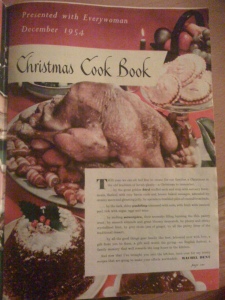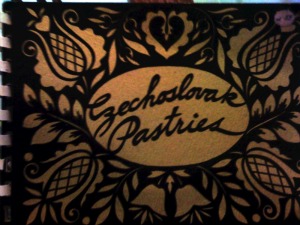Hey, Vintage Eaters! Christmas is quickly closing in on us, so before it’s too late, we wanted to share a recipe that was sent in by Alisha, a friend of Jen’s from college and an urban homesteader extraordinaire. Check out her blog here for some delicious-sounding vegetarian recipes.
This recipe is adapted from a recipe in this month’s Cook’s Country magazine. It makes about 3 dozen cookies. A note from Alisha: a mortar and pestle is great for crushing the fennel seeds.
Lemon-fennel cookies
2 cups all purpose flour
1 1/2 Tbsp fennel seeds, crushed
1 tsp baking powder
1/2 tsp salt
16 Tbsp unsalted butter, softened
1 1/2 cups sugar
1 large egg
1 Tbsp grated lemon zest (I used the zest of 1 whole lemon which is way more than required and it was not too much, but I like it lemony)
2 tsp almond extract
1 cup shelled pistachios, chopped
Preheat oven to 350 degrees, combine flour, fennel, baking powder and salt in a medium bowl. Beat sugar and butter until fluffy, add egg, lemon zest and almond. Beat together until fully incorporated. Add flour in stages, then 1/2 cup pistachios. Mix until just combined. Roll into balls, lightly press remaining pistachios into the tops and bake for approximately 10 minutes, or until edges begin to brown.
Can be stored at room temp for about 3 days, chilled for about a week.
Happy holidays!









